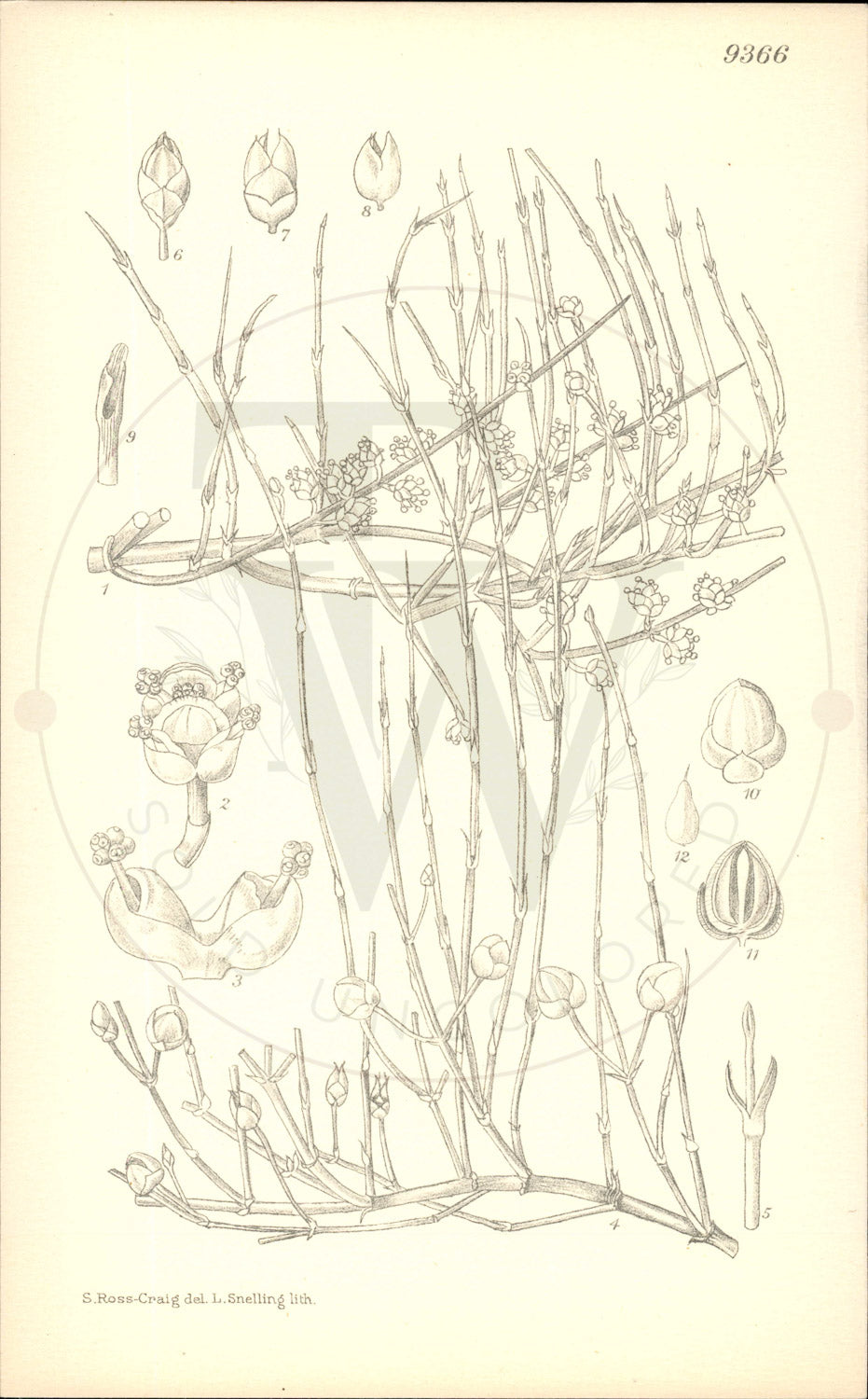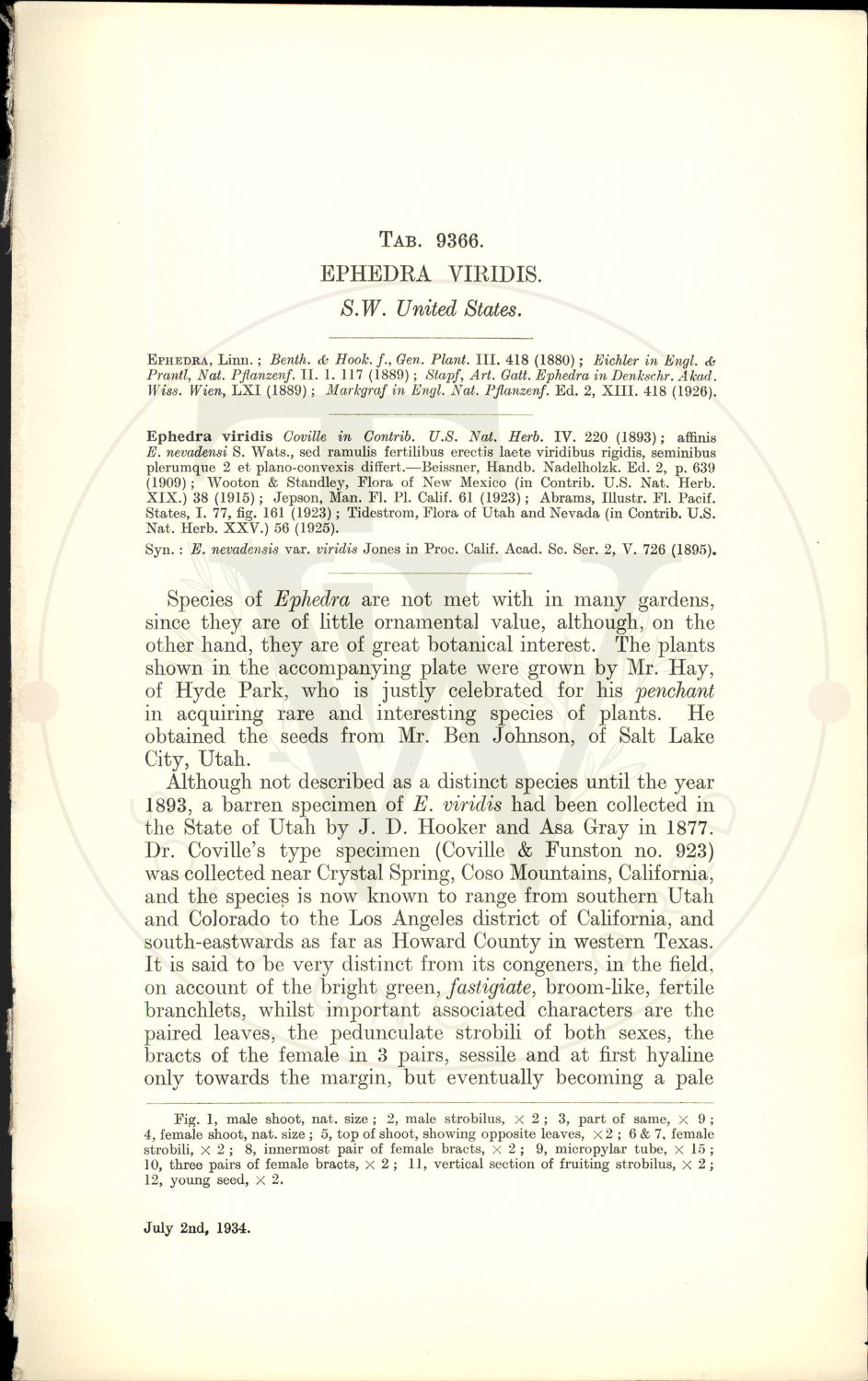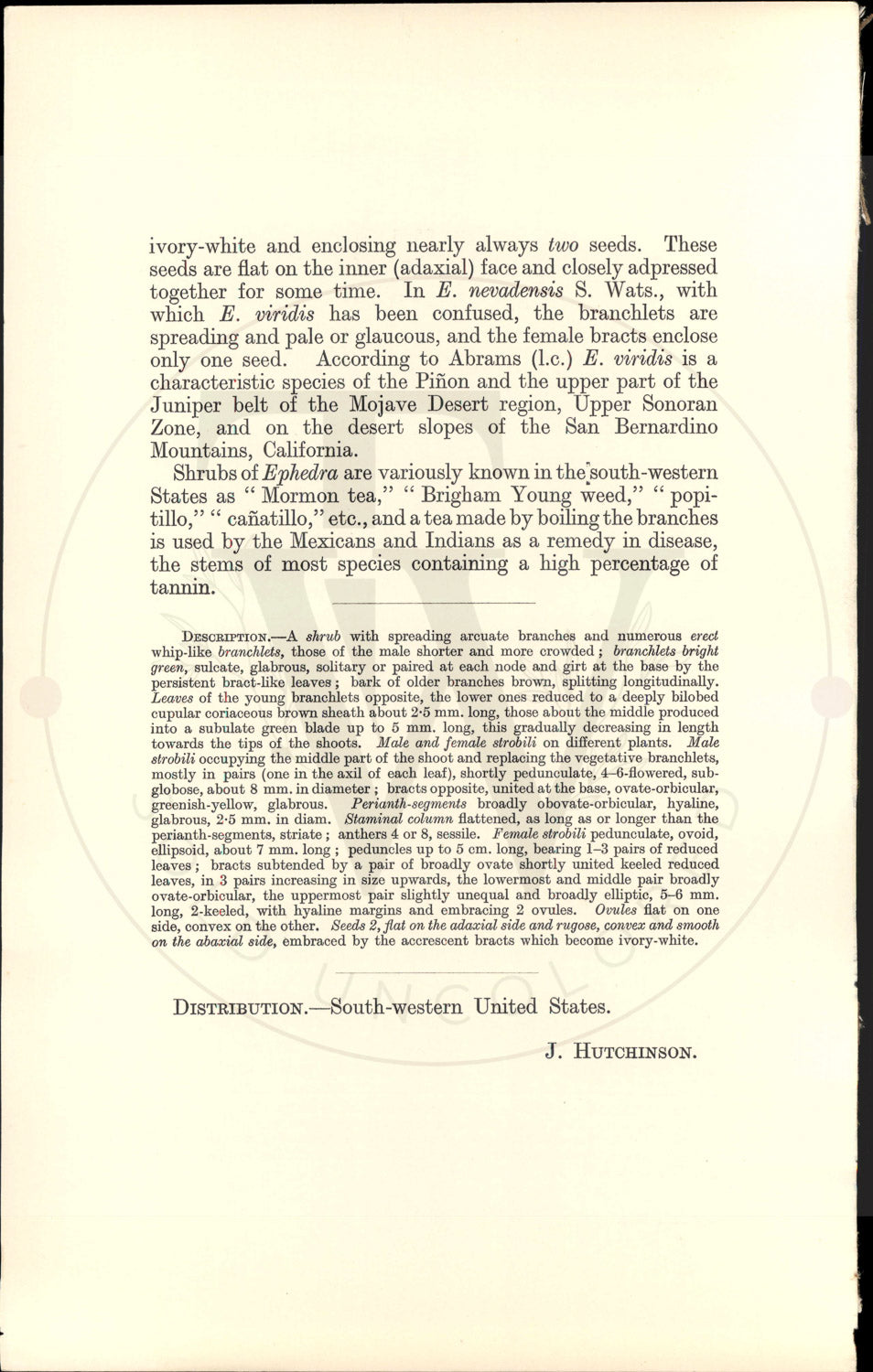Curtis Botanical Magazine
Plate 9366 - Ephedra viridis
Plate 9366 - Ephedra viridis
Couldn't load pickup availability
Curtis's Botanical Magazine - Plate 9366
Ephedra viridis
Native Region: S.W. United States • Publication Date: July 2nd, 1934
Distribution: Himalaya, from Hazara to Bhutan; • Tab Author: V. S. SUMMERHAYES.
Botanical Description
Species of Ephedra are not met with in many gardens, since they are of little ornamental value, although, on the other hand, they are of great botanical interest. The plants shown in the accompanying plate were grown by Mr. Hay, of Hyde Park, who is justly celebrated for his penchant in acquiring rare and interesting species of plants. He obtained the seeds from Mr. Ben Johnson, of Salt Lake City, Utah. Although not described as a distinct species until the year 1893, a barren specimen of E. viridis had been collected in the State of Utah by J. D. Hooker and Asa Gray in 1877. Dr. Coville's type specimen (Coville & Funston no. 923) was collected near Crystal Spring, Coso Mountains, California, and the species is now known to range from southern Utah and Colorado to the Los Angeles district of California, and south-eastwards as far as Howard County in western Texas. It is said to be very distinct from its congeners, in the field, on account of the bright green, fastigiate, broom-like, fertile branchlets, whilst important associated characters are the paired leaves, the pedunculate strobili of both sexes, the bracts of the female in 3 pairs, sessile and at first hyaline only towards the margin, but eventually becoming a pale.
Synonyms
Syn. E. nevadensis var. viridis Jones in Proc. Calif. Acad. Sc. Ser. 2, V. 726 (1895). Species of Ephedra are not met with in many gardens,
About This Print
Original black and white uncolored botanical print from Curtis's Botanical Magazine (established 1787). This 9000s series print is from unissued publisher stock, never hand-colored, representing the authentic plate as it appeared in the magazine. Edited by Sir Arthur William Hill for The Royal Horticultural Society, London.
Share







